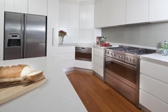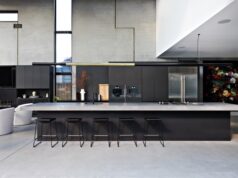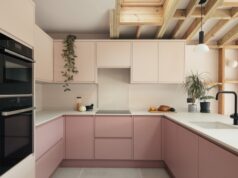
How many drawers will you have? What will you need them for – and where’s the best place to put them? Will they be soft-closing? Find out what you need to consider when planning your kitchen drawers.

What are drawers used for in kitchens?
At the risk of stating the obvious, drawers are a great way to store things, and you’ll find them in more or less every single kitchen you ever visit. Drawers, unlike static cupboards, allow you to pull their contents right out in the open for easy access.
As well as the obvious top-drawer to store cutlery, the obligatory secondary drawer for frequently used utensils (and possibly a third drawer for the less popular ones), pull out drawers can also be used in other locations to help you make full use of your cupboard space.
More than ever, people are beginning to install large pull out drawers in the bottom compartments of their kitchen cupboards. Not only does this help to ensure that things don’t disappear forever into the dark recesses of your cabinets, but it also goes a long way towards ensuring you don’t give yourself a hernia when you’re searching for the cake tins.
For the same reasons, it’s not uncommon to find drawers being used in pantry cupboards, and pretty much everywhere in kitchens designed for people with mobility impairments.
How are kitchen drawers constructed?
Drawers should be constructed using moisture-resistant materials, including things like plastic laminated particleboard or fibreboard, timber, metal and wire.
They can be used alone at the top edge of floor mounted cabinetry (i.e. just underneath benches at waist height), or in combination either horizontally or vertically. It’s important that drawers don’t feature any sharp edges or protrusions that could cause any injury. This includes handles, which can easily catch on skin or clothes if they’re not completely rounded off or recessed into the face of the drawer.
To ensure that drawers are properly fitted and that they don’t protrude, it’s recommended that gaps between the drawer fronts and adjacent edges of cabinetry are a maximum of 3mm. Drawer fronts are typically attached to the drawer with screws, to allow the correct alignment with the other elements of the cabinet.
How big should drawers be?
Drawer sizes and dimensions are determined by the dimension of the cabinet and their application. Different sized drawers are required for cutlery, cooking utensils, pots and appliances etc., and should be sized to fit the rest of your cabinetry.
If your drawer is being designed to carry pots or other heavy items, they should be fitted with appropriately rated drawer slides to ensure that they can take the strain, and all drawers need to incorporate an outstop to prevent the drawer from falling out. Cabinet plinths or legs may also be installed to hold heavy loads.
One last thing to consider when deciding on where to install drawers – take into account that shelves provide marginally more storage space than drawers. It’s unlikely to make a huge practical difference, but it’s worth factoring into your measurements when you’re deciding on how much storage you’re going to need.





